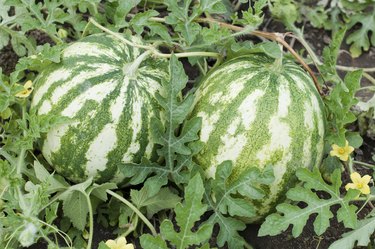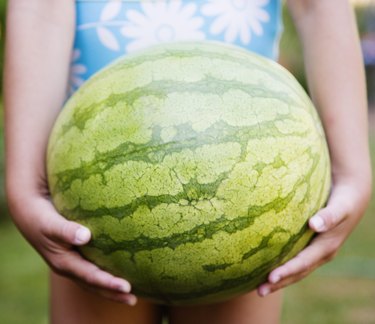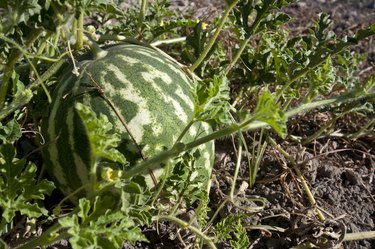
A sugar baby watermelon is a delicious summer treat, but you need to harvest it at the correct time. If you harvest too soon, it won't be as sweet as you want, but wait too long and it will become rotten. To determine when to pick your sugar baby watermelons, you need to look at all the signs. Through this combination, you'll be able to know that your watermelon is ripe without even cutting it open.
Harvest Time
Video of the Day

If you're planting your watermelons from seeds rather than transplanting starter plants, you can use the approximate harvest time as a guideline. Sugar baby watermelons should become ready for harvest about 70 to 75 days after planting, according to the University of Illinois Extension.
Video of the Day
Feeling

Your watermelon should weigh about 6 to 10 lbs. The outside should be a bright green and it should be difficult to penetrate the rind with your fingernails. It should feel firm, not pliable, as you try to squeeze it.
Sound

Make a fist and knock on the side of your watermelon. If it sounds hollow as you do this, then it's probably ripe, according to the Cornell University Cooperative Extension. The University of Illinois Extension, however, warns not to use this as the only sign of ripeness, as waiting too long for this sound may cause your watermelon to become overripe.
Visual Signs

If it's time to pick your watermelon, the vine attached to it will appear dry with the leaves curling. Additionally, the surface of the watermelon should turn a dull color and the area where the watermelon was touching the soil will have a yellowish tint.